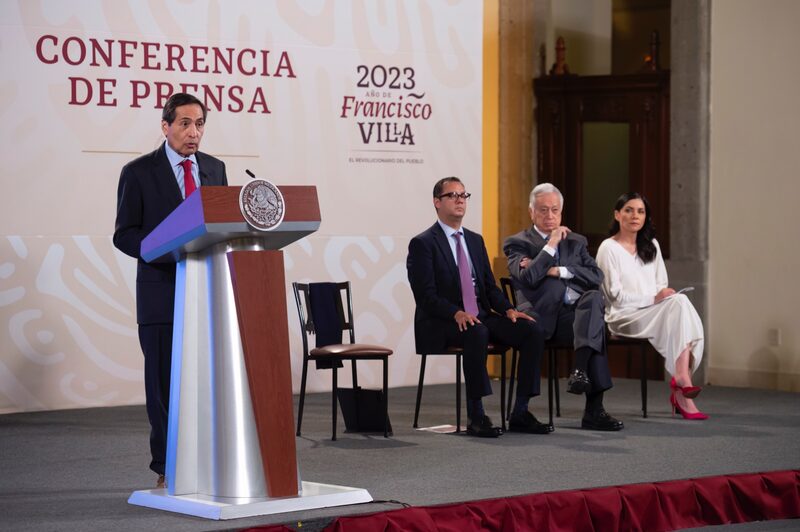Mexico City — Mexico’s Finance Ministry (SHCP) will inject 45 billion pesos ($2.49 billion) into the country’s national infrastructure fund (Fonadin) for the purchase of the electric power plants the government is buying from Spanish energy company Iberdrola, according to Finance Minister Rogelio Ramírez de la O.
Speaking during President Andrés Manuel López Obrador’s customary morning press conference on Wednesday, the minister said the capital injection will allow Fonadin to have a 51% venture capital stake in the plants.
“The operation is financed by Fonadin, which is a contribution to the capital of 45 billion pesos, a contribution made by the Treasury to Fonadin to give it the capacity to finance the purchase. The 45 billion pesos are for 51% of the value of the capital.”
Rogelio Ramírez de la O, Mexico's finance minister
The minister said these types of operations are financed with venture capital and debt, or financing as a whole.
He said that the equity contribution is 45 billion pesos, while the financing providing by the project’s own flows will be 66.5 billion pesos ($3.68 billion).
In sum, the capitalization and financing total $5.9 billion, which is what it is costing the government to purchase 13 power generation plants from Iberdrola, of which 12 are combined-cycle generation and one is a wind farm.
The cost of the purchase of the plants from Iberdrola is equivalent to almost 120 billion pesos, around 0.4% of Mexico’s GDP, according to President López Obrador.
The finance ministry stated that Fonadin has a balance of 56.04 billion pesos ($3.10 billion) at end-2022, which is insufficient to settle the purchase operation and suggests that Fonadin or other agencies will have to resort to the market to issue debt.
Ramírez de la O explained that, in the operating structure of this transaction, Fonadin is the acquirer, but underneath there will be a special purpose acquisition vehicle (SPAC) to carry out the transaction, which will imply a contract between the SPAC and the Mexican Infrastructure Fund (MIP), a company specialized in managing this type of assets.
“The contract will be only as administrator, Fonadin ensures that it has majority control of the venture capital assets, and therefore of the vehicles to be divested for this purpose.”
Rogelio Ramírez de la O.
Will the purchase incur debt?
Rogelio Ramírez de la O. said that the financing for the purchase of Iberdrola’s assets is assured, first, by Fonadin and, second, by the market is offering financing even without knowing the details, which includes large banks.
When asked if part of the purchase will be financed with debt, he said the venture capital part, which is the part taken on by Fonadin, will consist of already available funds, and that the other part will be debt.
He explained that this debt is already incurred by the SPAC that Fonadin will create to take charge of the project, and which is not in the budget, and therefore does not impact the country’s debt/GDP ratio.
He said that, regardless of the financing model, the flow of payments is assured with the income from the energy sold that is generated by the power plants.
“The flow of income to Iberdrola eventually left Mexico; and now that income flow will stay in Mexico, will return to Fonadin, and will return to the banks that finance the purchase, to the institutional investors, or will return to [state-owned electric power utility] CFE via operating profits.”
Rogelio Ramírez de la O.



